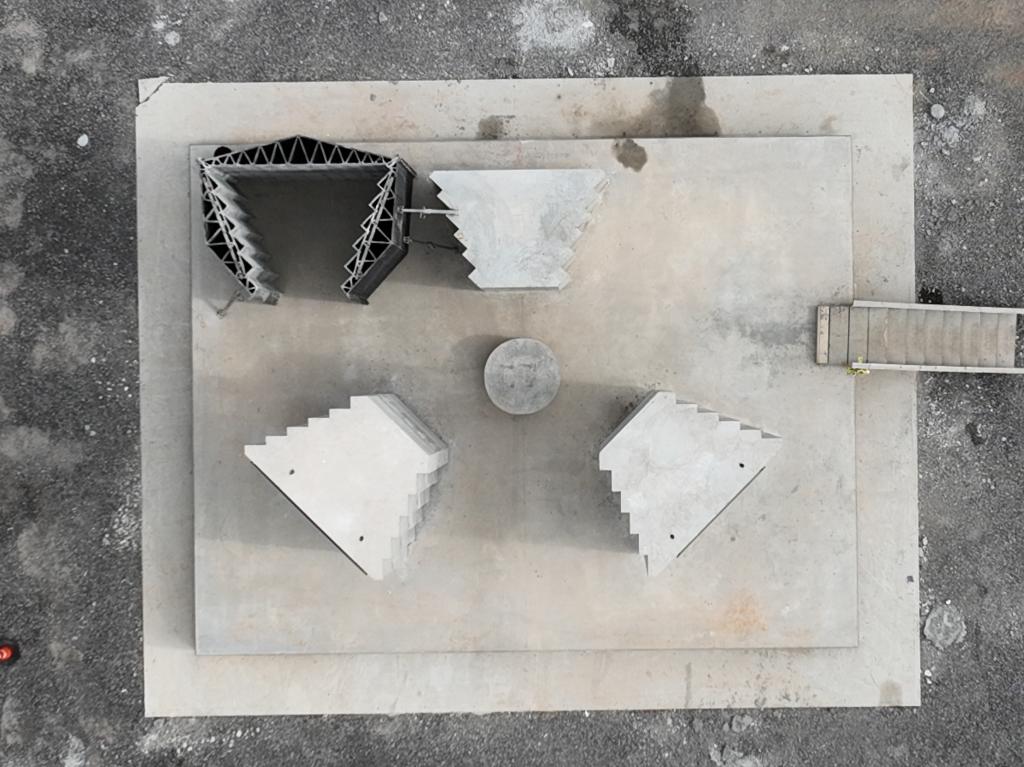Having just 3D printed specimen containers using additive, ORNL is moving further. At the ORNL Manufacturing Demonstration Facility (MDF), they’ve worked with Kairos Power and Barnard Construction to use 3D printing for construction. There is renewed interest in nuclear power as an energy technology. New developments and novel types of nuclear power plants are attracting investor interest and may be a part of the answer to the problem of getting enough energy for the planet without wrecking the very planet we live on. But new innovative power plants will need to be constructed through new methods.
Traditional nuclear plants often take decades and billions more to construct than planned. This makes politicians look foolish but also makes banks and other funding bodies less likely to lend. And if they do lend, rates may be higher due to the uncertainty. Higher funding costs and overall spend will increase the kWh price of the plant and make nuclear power less competitive when compared to the more pedestrian construction of gas or coal plants.
What’s more, delays, overruns, bad press, and more money than expected all mean that governments will be more hesitant to initiate new nuclear power plant construction projects in the future. Reducing uncertainty and reducing construction costs is therefore of paramount importance if you wish to usher in a new, safer, and lower-cost nuclear era.
ORNL is making it happen through 3D printing large-format polymer composite materials. These are then used to cast complex concrete structures. This approach has been used before on high-tech, high-cost, high-complexity construction projects. 3D printing formwork may seem somewhat less sophisticated than printing the final article itself, but it saves a lot of cost, materials, and time. In many cases, it can be significantly cheaper. It also has the benefits of fitting inside existing processes and paradigms. Properties and performance are also likely to be similar to those of regular cast concrete.

The Kairos Power and Barnard Construction teams collaborated closely to complete the Janus cast-in-place concrete demonstration in a matter of days. Image courtesy of Kairos Power.
Now, “likely” and “similar” are not words you want to be caught using frequently when building nuclear power plants. On the Hermes Low-Power Demonstration Reactor construction project, they’ve made 10 by 10-foot 3D prints that will be used to cast columns. These columns will hold up the bioshield, the primary shielding protecting the plant from the outside world and the world from the plant. The printed parts are, somewhat surprisingly, made out of CF ABS. ABS was initially used extensively in large-format 3D printing before being often eclipsed by PP, HDPE, PETG, PIPG (post-industrial waste recycled PETG), and many other cheaper materials. ABS can be recycled perhaps six or seven cycles, but the virgin material required and the loss of properties would be tricky to master. Thanks to 3D printing, ORNL can use cast-in-place methods. The printing method used here significantly reduces the time to part.
MDF Director Ryan Dehoff stated,
“At ORNL, we’re showing that the future of nuclear construction doesn’t have to look like the past. We’re combining national lab capabilities with MDF’s legacy of taking big, ambitious swings — moonshots that turn bold ideas into practical solutions — to accelerate new commercial nuclear energy.”
Kairos Power’s Co-Founder Edward Blandford added,
“We’ve had a relationship with MDF since Kairos Power’s formation.They move fast, they think creatively, and they’ve demonstrated that they can deliver transformative results when conventional manufacturing would fall short.

From left to right, ORNL’s Robert Wagner, Ahmed Arabi Hassen, and Ryan Dehoff visited the Hermes site to see the concrete poured into the forms. Image courtesy of ORNL, U.S. Dept. of Energy.
The companies responsible for the work were ORNL, Barnard, Kairos, Airtech, TruDesign, Additive Engineering Solutions, and Haddy. Haddy is a medium format polymer furniture 3D printing startup founded in 2022 by former Local Motors CEO Jay Rogers. Airtech is, of course, the tooling materials leader. TruDesign is actually a fascinating company that I want to write more about. While everyone was busy putting extruders on robots, that firm looked at smoothing and coating large-format polymer additive parts.
Once everyone had concluded that it was great to print something in five days, not so great to mill it for two weeks, they were ready to apply coatings that could create smooth surfaces while significantly increasing part strength. Additive Engineering Solutions started in 2016, making large-format 3D printed parts in Akron, Ohio. The company is one of the largest operators of large-format 3D printing equipment worldwide. Barnard Construction, meanwhile, is a Montana-based construction firm that does large-scale projects for mining, energy, and infrastructure.

Looking down on the Janus gate from above, the 3D-printed form is visible next to the concrete pillars arranged in a radiation symbol. Image courtesy of Kairos Power.
Achieving the correct accuracy and obtaining the desired final properties were the main challenges. Making this work precisely with the concrete mix and pour while getting the required compression strength and other properties was key. For this to become a solution in regular construction and in the exacting construction for nuclear power, a lot more testing and validation will have to be done. But, for projects that are high in criticality and complexity, 3D printed formwork will save a lot of material, time, and effort. Faster construction projects at lower costs could have an immense impact on nuclear power and beyond.

